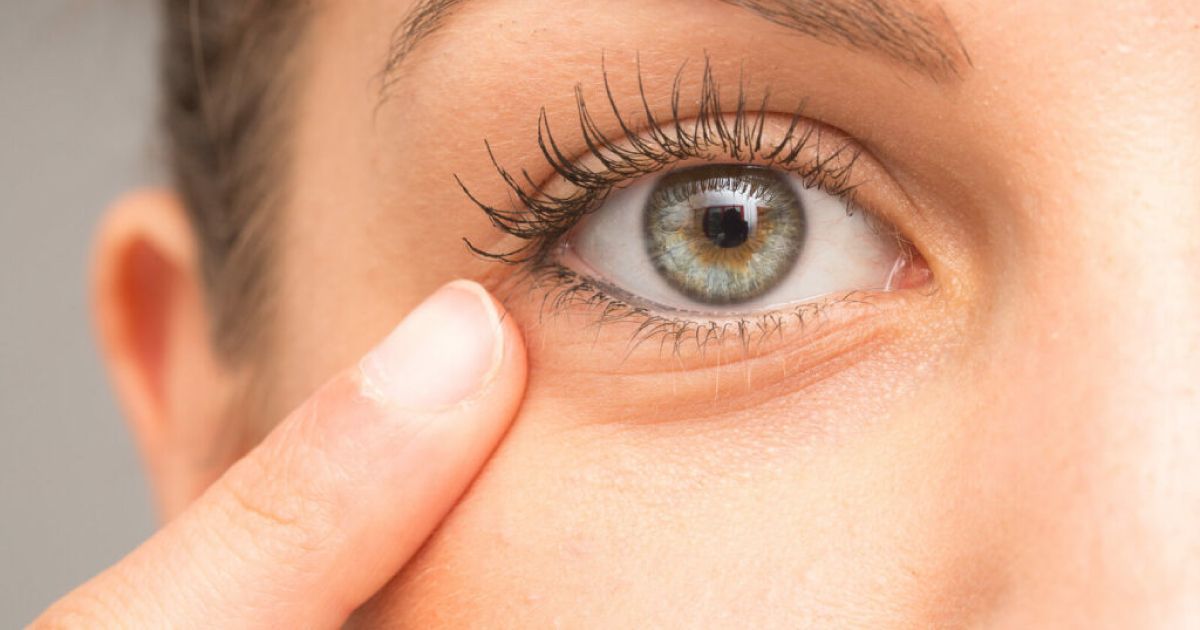Blepharitis Uncovered: A Common Eye Condition Explained

Read time: 6 minutes
Blepharitis is a common eye condition that affects many individuals, leading to discomfort and potential complications if left untreated. This condition, characterized by inflammation of the eyelids, can disrupt daily activities and impact overall eye health. In this comprehensive article, we will explore what blepharitis is, its causes, symptoms, diagnostic procedures, and the available treatments.
What is Blepharitis?
Blepharitis is the inflammation of the eyelids, specifically affecting the area where the eyelashes grow. This inflammation can cause redness, irritation, and swelling, often accompanied by crusting or scaling of the eyelid margins. Blepharitis can occur in two primary forms: anterior and posterior.
- Anterior Blepharitis: This type affects the outer front edge of the eyelid, where the eyelashes are attached. It is often associated with bacterial infections (like Staphylococcus) or skin conditions such as dandruff (seborrheic dermatitis).
- Posterior Blepharitis: This form involves the inner edge of the eyelid that touches the eyeball. It is usually related to dysfunction of the meibomian glands, which are responsible for secreting oils that lubricate the eye. Posterior blepharitis is commonly linked to skin conditions like rosacea or scalp dandruff.
Causes of Blepharitis
Understanding the causes of blepharitis is essential for effective management and prevention. Several factors can contribute to the development of this condition:
- Bacterial Infections: Staphylococcus bacteria are a common cause of anterior blepharitis. These bacteria can colonize the eyelid margins, leading to inflammation and irritation.
- Seborrheic Dermatitis: This skin condition, which causes dandruff on the scalp and eyebrows, can also affect the eyelids, leading to blepharitis.
- Meibomian Gland Dysfunction: The meibomian glands secrete oils that help keep the eyes lubricated. Dysfunction of these glands can lead to posterior blepharitis.
- Rosacea: A chronic skin condition that causes redness and swelling, rosacea can affect the eyelids and lead to blepharitis.
- Allergies: Allergic reactions to eye makeup, contact lens solutions, or other allergens can contribute to the development of blepharitis.
- Poor Eyelid Hygiene: Inadequate cleaning of the eyelids can lead to the buildup of debris and bacteria, increasing the risk of blepharitis.
Symptoms of Blepharitis
Blepharitis can present a range of symptoms, which can vary in severity. Common symptoms include:
- Redness and swelling of the eyelids
- Itching or burning sensation in the eyes
- Crusty or greasy debris at the base of the eyelashes
- Watery eyes
- Sensitivity to light (photophobia)
- Gritty or sandy feeling in the eyes
- Loss or misdirection of eyelashes (trichiasis)
- Dry eyes
- Blurred vision
These symptoms can be persistent and may lead to chronic discomfort if not properly managed.
Diagnosing Blepharitis
Diagnosing blepharitis involves a thorough examination by an eye care professional. The diagnostic process typically includes:
- Medical History: The doctor will review the patient’s medical history, including any underlying conditions such as rosacea or seborrheic dermatitis, and ask about symptoms and their duration.
- External Examination: The eye care professional will examine the eyelids, looking for signs of inflammation, redness, and crusting.
- Slit-Lamp Examination: This is a detailed examination using a specialized microscope called a slit lamp. It allows the doctor to closely inspect the eyelids, eyelashes, and the openings of the meibomian glands.
- Meibomian Gland Evaluation: The function of the meibomian glands may be assessed to determine if there is any dysfunction contributing to posterior blepharitis.
- Sample Collection: In some cases, the doctor may take a sample of the crust or debris from the eyelid for laboratory analysis to identify the presence of bacteria or other microorganisms.
Learn more about diagnostic tests we offer at Urban Optiks Optometry.
Treatment of Blepharitis
Managing blepharitis effectively involves a combination of good eyelid hygiene and medical treatments. The following strategies are commonly used:
Eyelid Hygiene
Maintaining clean eyelids is crucial for managing blepharitis. Patients are often advised to:
- Warm Compresses: Applying a warm compress to the eyelids can help loosen crusts and debris, making it easier to clean the eyelids. It also helps to open the meibomian gland ducts, promoting better oil secretion.
- Eyelid Scrubs: Gently scrubbing the eyelid margins with a diluted baby shampoo or a commercial eyelid cleanser can help remove debris and bacteria. This should be done daily, especially in chronic cases.
Medications
Depending on the severity and underlying cause of blepharitis, various medications may be prescribed:
- Antibiotics: Topical antibiotics (e.g., erythromycin or bacitracin ointments) can be applied to the eyelids to treat bacterial infections. Oral antibiotics (e.g., doxycycline) may be prescribed for more severe cases or if there is meibomian gland dysfunction.
- Steroid Eyedrops or Ointments: These can help reduce inflammation in severe cases but are typically used for short periods due to potential side effects.
- Artificial Tears: Over-the-counter artificial tear solutions can help alleviate dry eye symptoms associated with blepharitis.
Managing Underlying Conditions
Treating associated conditions such as rosacea or seborrheic dermatitis can help control blepharitis symptoms.
- Dietary Supplements: Omega-3 fatty acid supplements may be beneficial for individuals with meibomian gland dysfunction, as they can improve the quality of the oil secreted by these glands.
- In-Office Procedures: In some cases, more advanced treatments may be required:
- Lid Margin Debridement: This procedure involves cleaning the eyelid margins to remove biofilm and debris, which can contribute to inflammation.
- Meibomian Gland Expression: This procedure involves gently expressing the meibomian glands to clear blockages and improve oil secretion.
- Intense Pulsed Light (IPL) Therapy: IPL therapy can help reduce inflammation and improve meibomian gland function.
Preventing Blepharitis
Preventive measures can help reduce the risk of blepharitis and its recurrence. Here are some tips for prevention:
- Maintain Good Eyelid Hygiene: Regular cleaning of the eyelids can prevent the buildup of debris and bacteria. This is especially important for individuals prone to blepharitis.
- Avoid Eye Irritants: Be cautious with eye makeup, contact lens solutions, and other potential irritants. Ensure they are hypoallergenic and suitable for sensitive eyes.
- Manage Skin Conditions: If you have conditions like dandruff or rosacea, follow your doctor’s advice to keep them under control, which can help prevent blepharitis.
- Regular Eye Examinations: Routine check-ups with an eye care professional can help detect early signs of blepharitis and ensure prompt treatment.
- Healthy Diet: A diet rich in omega-3 fatty acids, such as fish, flaxseeds, and walnuts, can support eye health and improve the quality of oil secreted by the meibomian glands.
Living with Blepharitis
Living with blepharitis requires ongoing management and attention to eye hygiene. While it can be a chronic condition, following a consistent care routine can significantly reduce symptoms and improve quality of life. Here are some additional tips for managing blepharitis:
- Stay Consistent: Adhering to your eyelid hygiene routine is crucial for preventing flare-ups. Make it a part of your daily regimen.
- Follow Doctor’s Advice: Take medications as prescribed and attend follow-up appointments to monitor your condition.
- Educate Yourself: Understanding blepharitis and its management can empower you to take control of your eye health.
- Seek Support: If you experience persistent discomfort or complications, don’t hesitate to seek advice from your eye care professional. They can provide guidance and adjust your treatment plan as needed.
The Takeaway
Blepharitis is a common but manageable eye condition. With proper care, hygiene, and medical treatment, individuals with blepharitis can achieve significant relief from symptoms and maintain good eye health. Regular check-ups and a proactive approach to eye care are essential in managing this condition effectively.
By staying informed and vigilant, you can take control of your blepharitis and ensure that it has minimal impact on your daily life. Remember, your eye health is crucial to your overall well-being, and taking steps to care for your eyes will pay off in the long run.
Share this blog post on social or with a friend:
The information provided in this article is intended for general knowledge and educational purposes only and should not be construed as medical advice. It is strongly recommended to consult with an eye care professional for personalized recommendations and guidance regarding your individual needs and eye health concerns.
All of Urban Optiks Optometry's blog posts and articles contain information carefully curated from openly sourced materials available in the public domain. We strive to ensure the accuracy and relevance of the information provided. For a comprehensive understanding of our practices and to read our full disclosure statement, please click here.


















